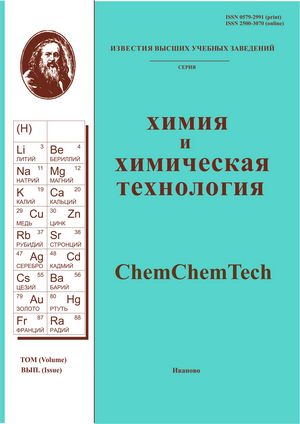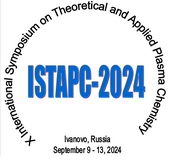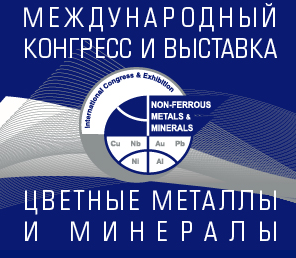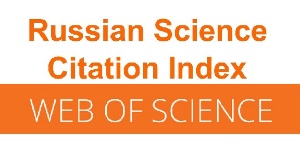ИССЛЕДОВАНИЕ ДЕЙСТВИЯ ВОДОРАСТВОРИМЫХ ГУАНИДИНСОДЕРЖАЩИХ (СО)ПОЛИМЕРОВ НА ASPERGILLUS NIGER И ОЦЕНКА ИХ ЭФФЕКТИВНОСТИ
Аннотация
В представленной работе рассмотрено действие модифицированных водорастворимых гуанидинсодержащих (со)полимеров на штамм плесневого гриба Aspergillus niger (A. niger). Установлено, что основной компонент широкоиспользуемых биоцидов полигексаметиленгуанидин гидрохлорид (ПГМГгх) наименее эффективно подавляет рост плесневого гриба, а увеличение содержания октаметиленовых фрагментов в макромолекулярной структуре, то есть увеличение гидрофобности, приводит к возрастанию фунгицидного действия и полностью подавляет рост клеток гриба. Проведены лабораторные эксперименты по изучению действия (со) полимеров при добавлении их в питательную среду в чашках Петри, а также при обработке поверхности их растворами разной концентрации реального объекта – здоровой древесины Сосны обыкновенной (Pinus sylvestris). Определено, что максимальное подавление роста A. niger достигается на питательной среде, содержащей 30 и 50% октаметилендиамина, что сопоставимо с данными, полученными при оценке фунгицидного действия на древесине Pinus sylvestris. В ходе исследования, полученные зависимости позволяют предположить механизм взаимодействия клеточной стенки гриба с (со)полимером, где на первом этапе воздействия происходит сорбция макромолекул полимера оболочкой стенки клетки гриба за счет содержащихся в ней белков – «адгезинов» с последующим нарушением целостности клетки и завершается осмотическом лизисом. Дана оценка эффективности исследуемых соединений и произведена их классификация согласно степени защитных свойств к поражению плесневелыми грибами древесины. Согласно классификации, исследуемые модифицированные водорастворимые гуанидинсодержащие (со)полимеры являются эффективными и высокоэффективными средствами по защищающей способности противостоять заражению поверхности древесины плесневыми грибами.
Для цитирования:
Стельмах С.А., Гаркушева Н.М., Лаврентьева Е.В., Григорьева М.Н., Очиров О.С., Окладникова В.О. Исследование действия водорастворимых гуанидинсодержащих (со)полимеров на Aspergillus niger и оценка их эффективности. Изв. вузов. Химия и хим. технология. 2024. Т. 67. Вып. 4. С. 126-133. DOI: 10.6060/ivkkt.20246704.6948.
Литература
Analiticheskaya zapiska: O zhilishchnom stroitel'stve v rossijskoj federacii v 2021 godu. Elektron. st. Rezhim dostupa k st. URL: https://rosstat.go.ru/storage/mediabank/Analt_zap_Jilc-troit_RF_2021.pdf. (in Russian).
Stroitel'stvo v Rossii. 2022: M.: Stat. sb. / Rosstat. 2022. 148 p. (in Russian).
Kunitskaya O.A. A biotechnological method of protecting wood from fungal lesions. Aktual. Napravleniya Nauch. Issled. XXI v: Teoriya Prakt. 2014. V. 2. N 4–3 (9–3). P. 440-444 (in Russian). DOI: 10.12737/6197.
Skugoreva S.G., Domracheva L.I., Trefilova L.V., Starikov P.A., Ashikhmina T.Ya. Biosecurity of wood from microbial damage (review). Teoret. Prikl. Ekol. 2023. N 1. P. 6-15 (in Russian). DOI: 10.25750/1995-4301-2023-1-006-015.
Krasnopevtseva E.A., Mal'tsev S.A., Krasnopevtseva N.A., Krasnopevtseva I.V., Kozina L.N. Dangerous neighbors: mold in residential premises. Sat. tr. All-Russian. scientific and practical. conf. Environmental problems and public health. Penza. 2016. P. 57-62 (in Russian).
Zagorodnyuk L.H., Lysikova N.V. Harmful effects of microorganisms on human health in residential premises, methods of their destruction by biocidal solutions. Tez. dokl. International Scientific and Technical conf. Innova-tive approaches to solving modern problems of rational use of natural resources and environmental protection. Belgorod: Izd-vo BGTU im. V.G. Shuhova. 2019. V. 3. P. 43-49 (in Russian).
Skugoreva S.G. Substances of plant origin in the protection of wood from the action of microorganisms-destructors. Tez. dokl. XVIII All-Russian Scientific.- practical conf. Ecology of the native land: problems and ways to solve them. Kirov: Izd-vo Vyatskogo gosudar-stvennogo universiteta. 2023. V. 3. P. 298-302 (in Russian).
Teptereva G.A., Pakhomov S.I., Chetvertneva I.A., Karimov E.H., Egorov M.P., Movsumzade E.M., Evstigneev E.I., Vasiliev A.V., Sevastyanova M.V., Voloshin A.I., Nifantyev N.E., Nosov V.V., Dokichev V.A., Babaev E.R., Rogovina S.Z., Berlin A.A., Fakhreeva A.V., Baulin O.A., Kolchina G.Yu., Voronov M.S., Staroverov D.V., Kozlovsky I.A., Kozlovsky R.A., Tarasova N.P., Zanin A.A., Krivoborodov E.G., Karimov O.Kh, Flid V.R., Loginova M.E. Renewable natural raw materials. Structure, properties, application prospect. ChemChemTech [Izv. Vyssh. Uchebn. Zaved. Khim. Khim. Tekhnol.]. 2021. V. 64. N 9. P. 4–121 (in Russian). DOI: 10.6060/ivkkt.20216409.6465.
Mognonov D.M., Stel'makh S.A., Ayurova O.Zh., Grigor'eva M.N., Ochirov O.S., Buyantuev S.L., Leb-edeva S.N., Zhamsaranova S.D. Antiseptic for wooden building structures and products based on water-soluble polyguanidines. Stroit. Mater. 2018. N 1-2. P. 91-94. (in Russian).
Stelmakh S.A., Grigor’eva M.N., Garkusheva N.M., Lebedeva S.N., Ochirov O.S., Mognonov D.M., Zham-saranova S.D., Batoev V.B. Studies of new biocidal polyguanidines: antibacterial action and toxicity. Polym. Bull. 2021. V. 78. P. 1997–2008. DOI: 10.1007/s00289-020-03197-1.
Grigor'eva M.N., Stel'mah S.A., Astahova S.A., Center I.M., Bazaron L.U., Batoev V.B., Mognonov D.M. Syn-thesis of polyalkylguanidine hydrochloride copolymers and their antibacterial activity against opportunistic mi-croorganisms Bacillus cereus and Escherichia coli. Khim.-Farm. Zhurn. 2015. V. 49. N 2. P. 29-33 (in Russian).
Grigor'eva M.N., Stel'makh S.A., Bazaron L.U., Mognonov D.M. Dependence of the viscosity character-istics of polyhexamethylene guanidine hydrochloride on the synthesis conditions. Vysokomol. Soed. Ser. B. 2014. V. 56. N 3. P. 245 (in Russian). DOI 10.7868/S2308113914030061.
Determination of the sensitivity of microorganisms to antibacterial drugs: Methodological guidelines. Moscow: Federal Center for State Sanitary and Epidemiological Supervision of the Ministry of Health of the Russian Federation. 2004. 91 p. (in Russian).
GOST 30028.4.- 2006. Protective products for wood. Express method for evaluating the effectiveness against wood-coloring and mold fungi: date of introduction 2007-07-01 / Federal Agency for Technical Regulation. Moscow: Standartinform. 2006. 8 p. (in Russian).
Methods of laboratory research and testing of medical preventive disinfectants to assess their effectiveness-news and safety: Manual. M.: Federal Center for Hygiene and Epidemiology of Rospotrebnadzor. 2010. 615 p. (in Russian).
Grigor'eva M.N., Stel'makh S.A., Astakhova S.A., Tsenter I.M., Bazaron L.U., Batoev V.B., Mognonov D.M. Biocidal action of copolymers based on aliphatic diamines and guanidine hydrochloride. J. Appl. Polym. Sci. 2014. V. 131. N 11. P. 40319. DOI: 10.1002/app.40319.
Ochirov O.S., Burasova E.G., Stel'makh S.A., Grigor'eva M.N., Okladnikova V.O., Mognonov D.M. Antimicrobial activity of polyhexamethylene guanidine hydrochloride derivatives in relation to multi-resistant strains of microorganisms. Infekts. Immunitet. 2022. V. 12. N 1. P. 193-196 (in Russian). DOI: 10.15789/2220-7619-AAO-1751.
Agustinho D.P., Miller L.C., Li L.X., Doering T.L. Peeling the onion: the outer layers of Cryptococcus neofor-mans. Mem. Inst. Oswaldo Cruz. 2018. 113 (7). e180040. DOI: 10.1590/0074-02760180040.
Garcia-Rubio R., Oliveira H. C., Rivera J., Trevijano-Contador N. The fungal cell wall: Candida, Cryptococ-cus, and Aspergillus species. Front. Microbiol. 2020. V. 10. P. 2993. DOI: 10.3389/fmicb.2019.02993.
Ghassemi N., Poulhazan A., Deligey F., Mentink-Vigier F., Marcotte I., Wang T. Solid-state NMR investigations of extracellular matrixes and cell walls of algae, bacteria, fungi, and plants. Chem. Rev. 2022. 122. P. 10036-10086. DOI: 10.1021/acs.chemrev.1c00669.
Gow N.A.R., Lenardon M.D. Architecture of the dynamic fungal cell wall. Nat. Rev. Microbiol. 2023. V. 21. P. 248-259. DOI: 10.1038/s41579-022-00796-9.
Municio-Diaz C., Muller E., Drevensek S., Fruleux A., Lorenzetti E., Boudaoud A., Minc N. Mechanobiology of the cell wall – insights from tip-growing plant and fun-gal cells. J. Cell Sci. 2022. 135(21). jcs259208. DOI: 10.1242/jcs.259208.
Latgé J.-P., Beauvais A., Chamilos G. The cell wall of the human fungal pathogen Aspergillus fumigatus: bio-synthesis, organization, immune response, and virulence. Annu. Rev. Microbiol. 2017. V. 71. P. 99-116. DOI: 10.1146/annurev-micro-030117-020406.
Free S.J. Chapter two - fungal cell wall organization and biosynthesis. Adv. Genet. 2013. V. 81. P. 33-82. DOI: 10.1016/ B978-0-12-407677-8.00002-6.
Sundstrom P. Adhesion in Candida spp. Cell. Microbiol. 2002. 4(8). P. 461-469. DOI: 10.1046/j.1462-5822.2002.00206.x.
Taib M., Pinney J.W., Westhead D.R., McDowall K.J., Adams D.J. Differential expression and extent of fun-gal/plant and fungal/bacterial chitinases of Aspergillus fumigatus. Arch. Microbiol. 2005. 184. P. 78-81. DOI: 10.1007/s00203-005-0028-x.
Gooday G.W. Biosynthesis of the fungal wall-mechanisms and implications the first fleming lecture. J. Gen. Microbiol. 1977. 99. P. 1-11. DOI: 10.1099/00221287-99-1-1.
Gubbins P.O., Anaissie E.J. Chapter 7 - Antifungal therapy. Clin. Microbiol. 2009. V. 805. P. 161-195. DOI: 10.1016/B978-1-4160-5680-5.00007-4.
Stelmakh S.A., Grigor'eva M.N., Tikhonenkov D.V., Ochirov O.S., Mognonov D.M. Assessment of acute and chronic toxicity of water-soluble polyguanidines towards hydrobionts. IOP Conf. Series: Earth Environ. Sci. 2019. 320 (1). 012047. DOI: 10.1088/1755-1315/320/1/012047.



















